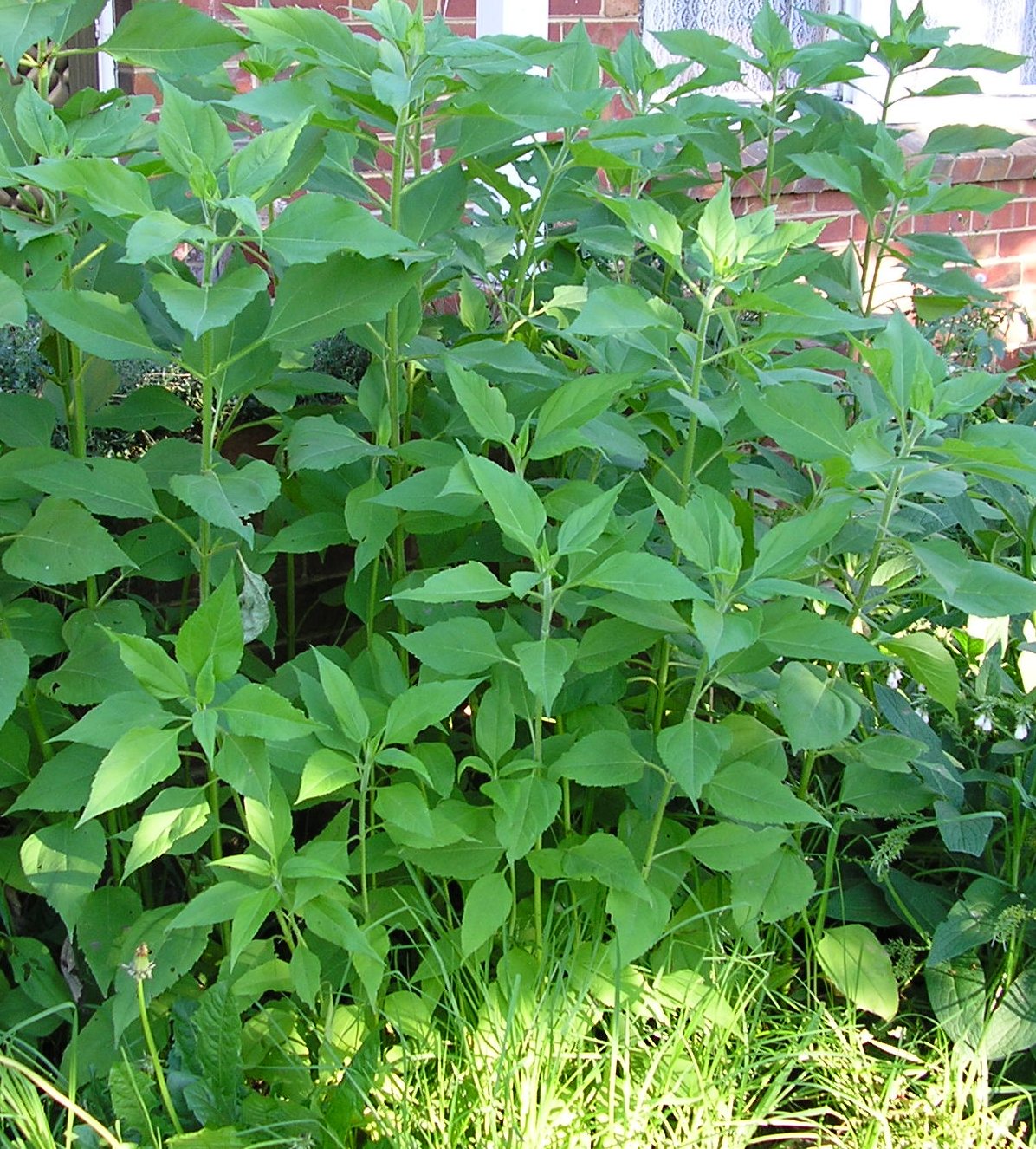 |
| Jerusalem Artichokes - At best a distant relation to true artichokes |
Having tracked them down, I had to decide where to plant them. And this is where I hit contradictory advice. One of the things which originally attracted me to Jerusalem Artichokes was that numerous sources described them as:
1. Prolific / high yielding
2. Unpicky as to site / soil
3. Tolerating partial shade
4. Spreading to a form a dense cover, invasive if not controlled
5. Casting dense shade below that suppresses (other!) weeds
For example, here is what Patrick Whitefield has to say about them:
The best place for them is either just to the north of the forest garden where the ground is shaded by the trees, or in some place that is shaded by buildings or other tall vegetation. An acquaintance of mine who had an awkward patch in his garden, overshaded by laurel bushes, found that Jerusalem artichokes were the only food plant he could grow there with any success.
...
They are very tough plants, tolerant of poor soils and needing little in the way of cultivation.With this idea of their requirements, I had planned to put them in a slightly shady corner, between two hedges, currently overrun with ground elder. My cunning plan was to use them as a crop of last resort for a difficult area, and to try to use them as a barrier to either keep the ground elder in that corner or at least slow down its spread a bit. I had a good two or three square meters partially cleared and ready to go.
But then I read the planting advice on the packet containing the tubers. This advice could be summarised as:
1. Plant them somewhere sunny
2. Keep soil around them moist
3. Keep the soil around them clear of weeds
4. Feed them with compost, manure or fertiliser
This could basically be summarised as "coddle the plants". This is a far cry from a lot of what you can read online, which describes the plants as basically indestructible.
So which set of requirements is correct? It seems to be quite common in gardening that one and the same plant can be described in very different terms by different sources. I think that this is basically because there are so many variables involved that often it's not clear why a plant succeeds in one location but not another, and people then incorrectly extrapolate from their experience. In the case of plant suppliers, I think they also tend to play it safe to avoid complaints.
Anyway, I decided to just go ahead and give it a try. 15 tubers are now planted in my slightly shady three square meters, partially cleared but with ground elder roots still lurking in there somewhere. Hopefully I'll be able to report a dense Jerusalem Artichoke thicket in a few months.
No comments:
Post a Comment